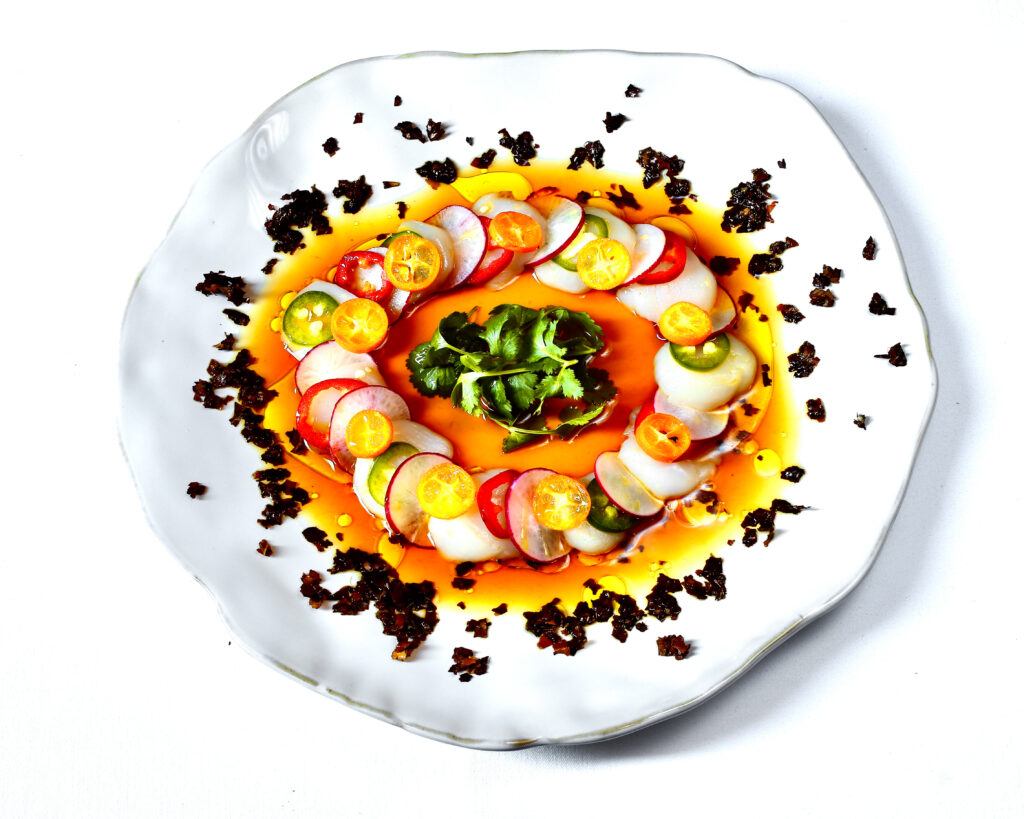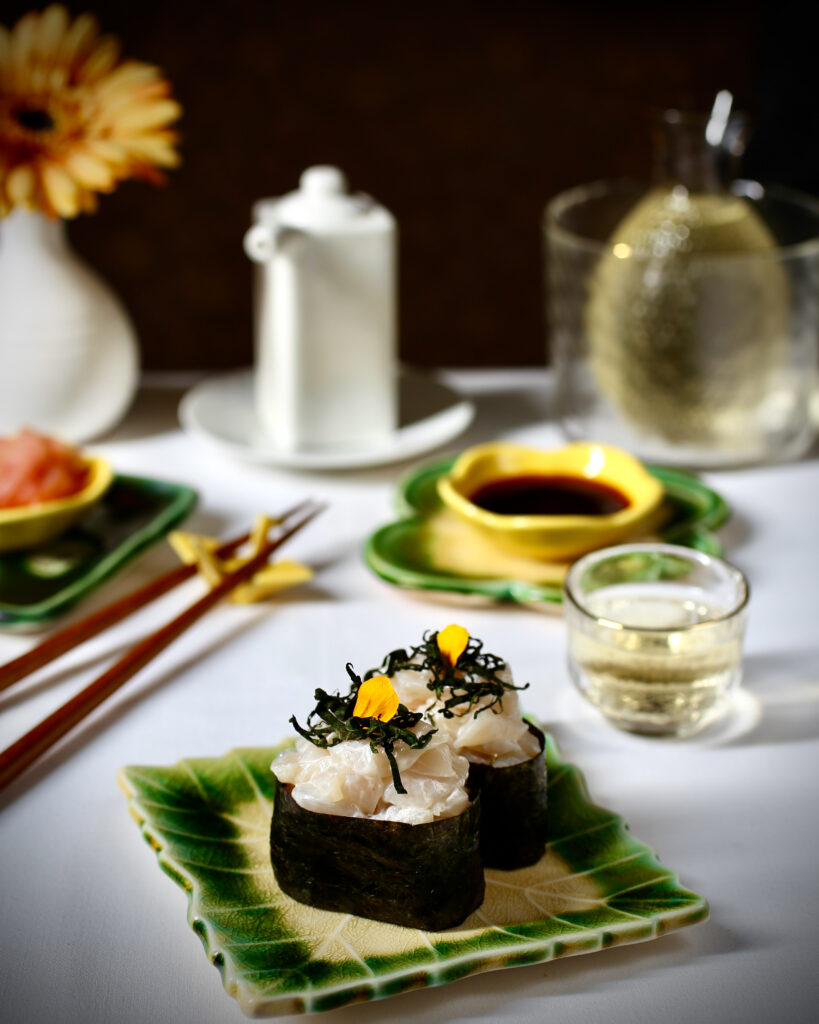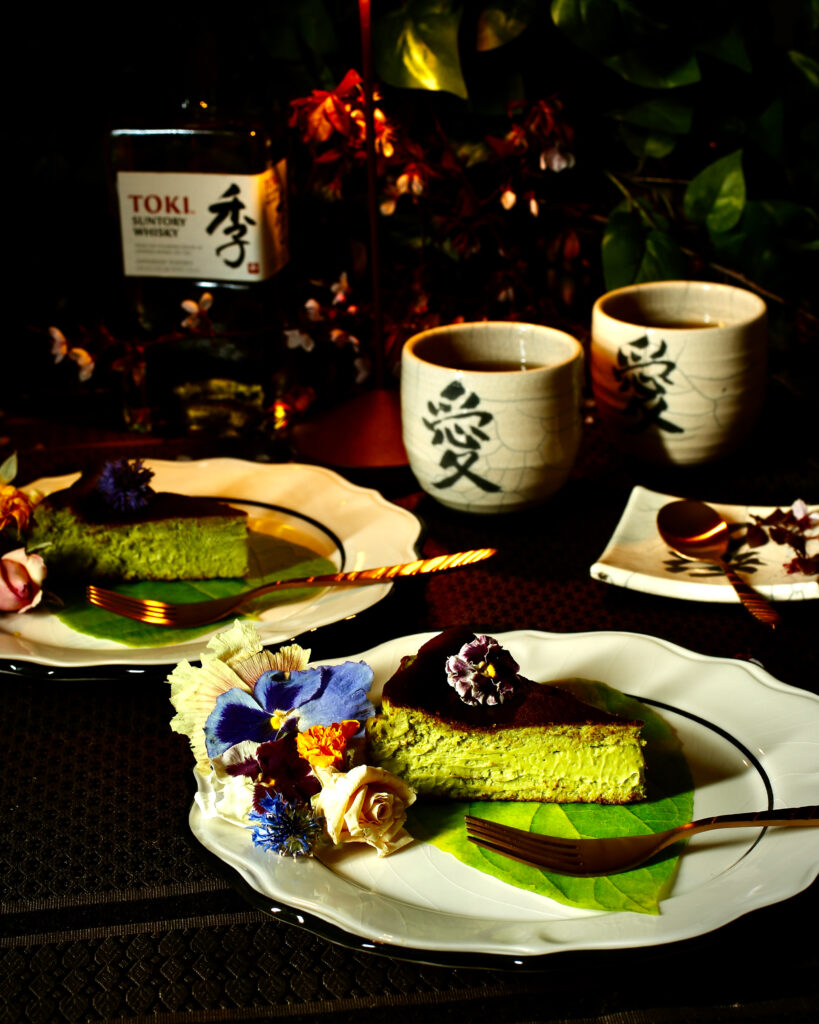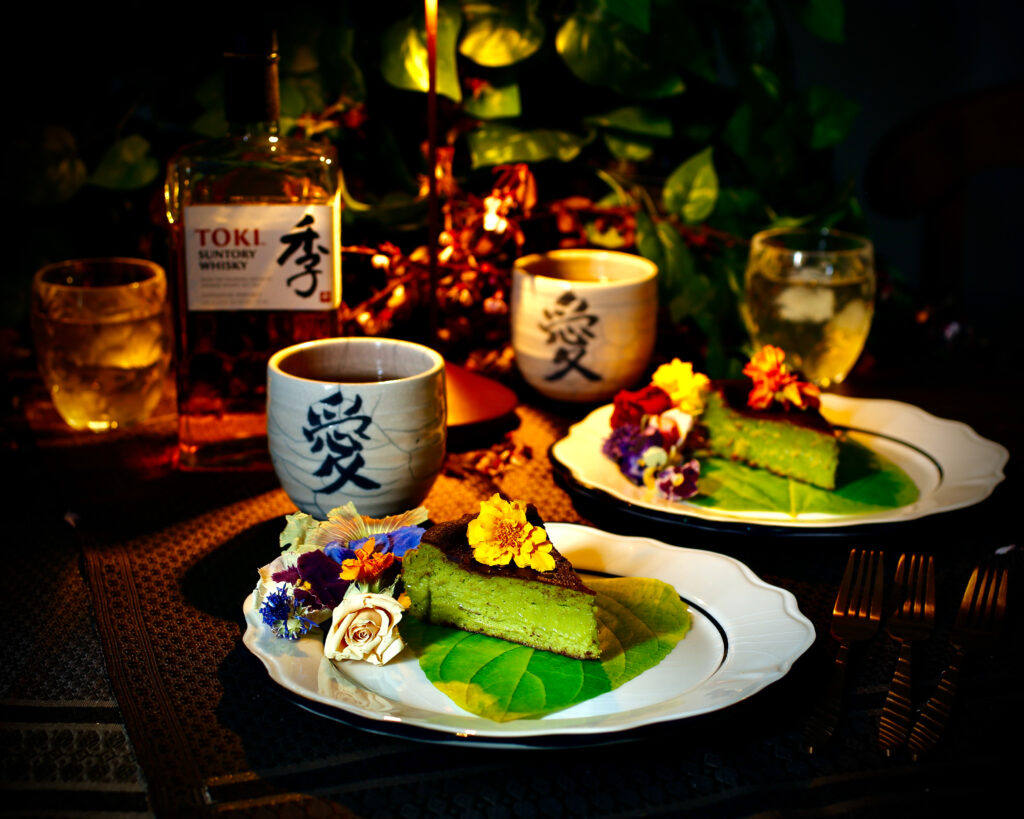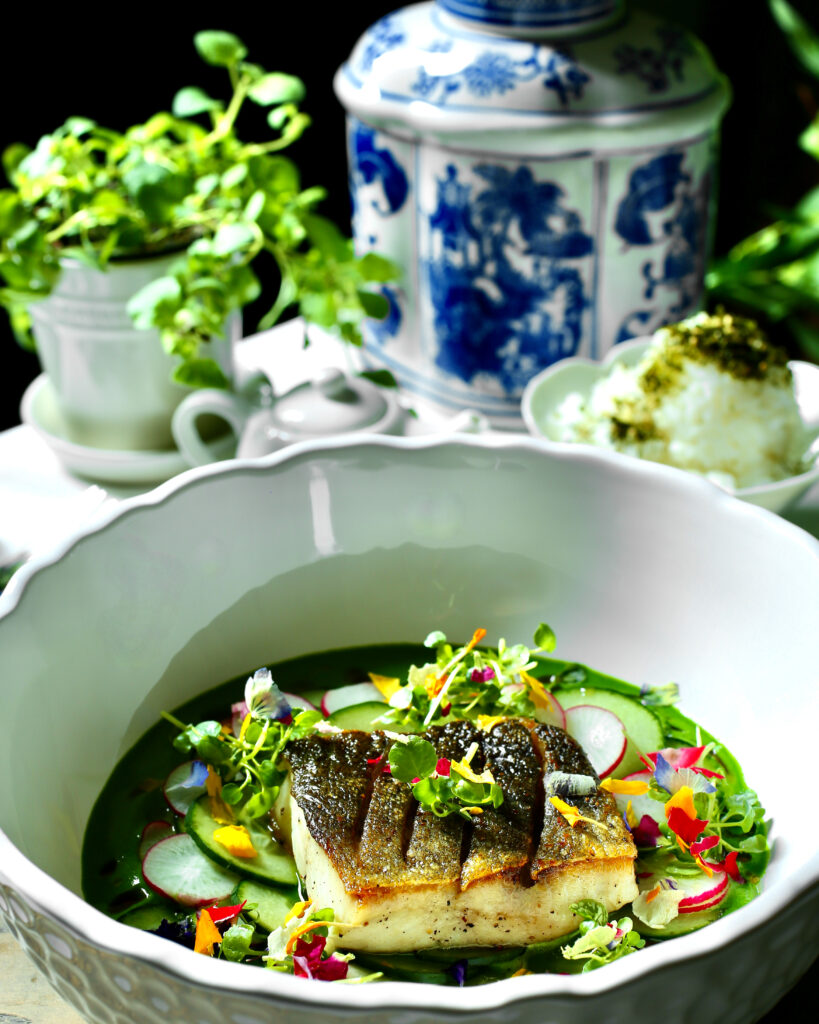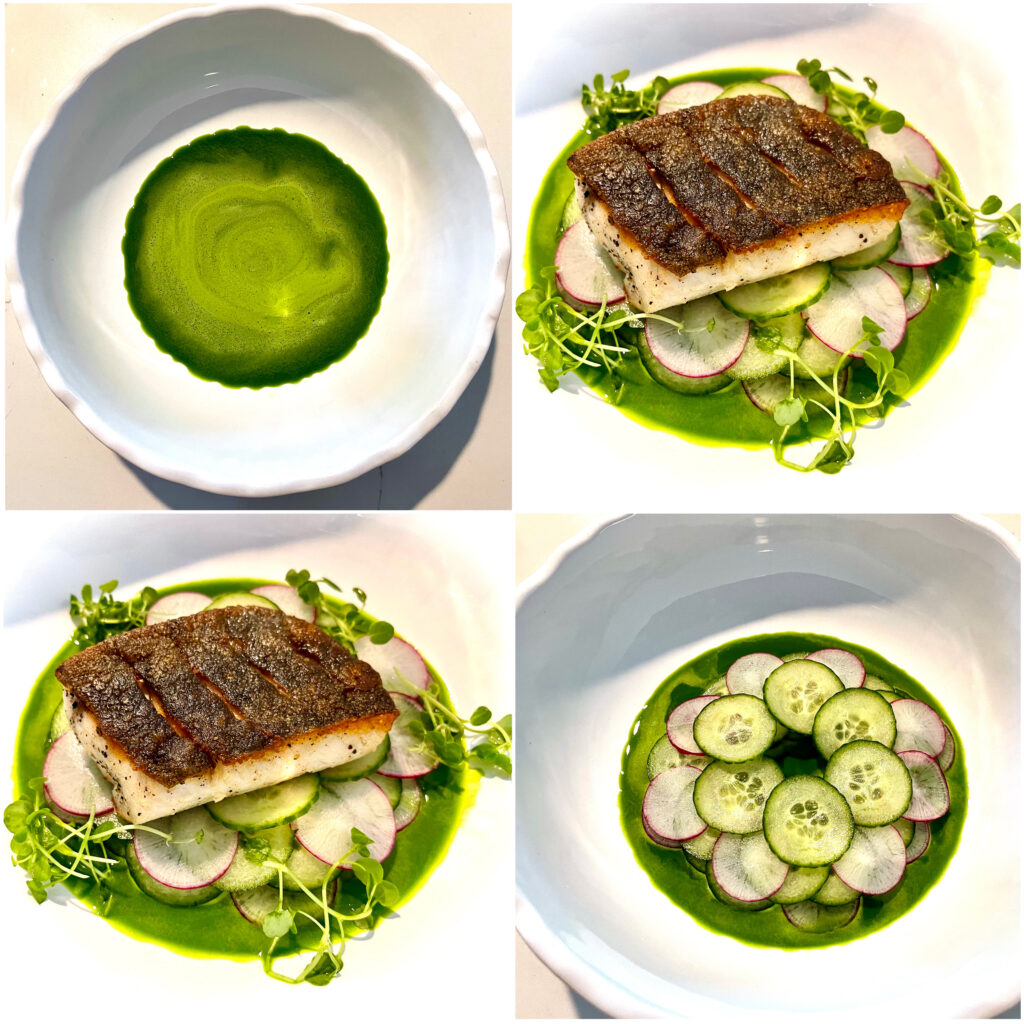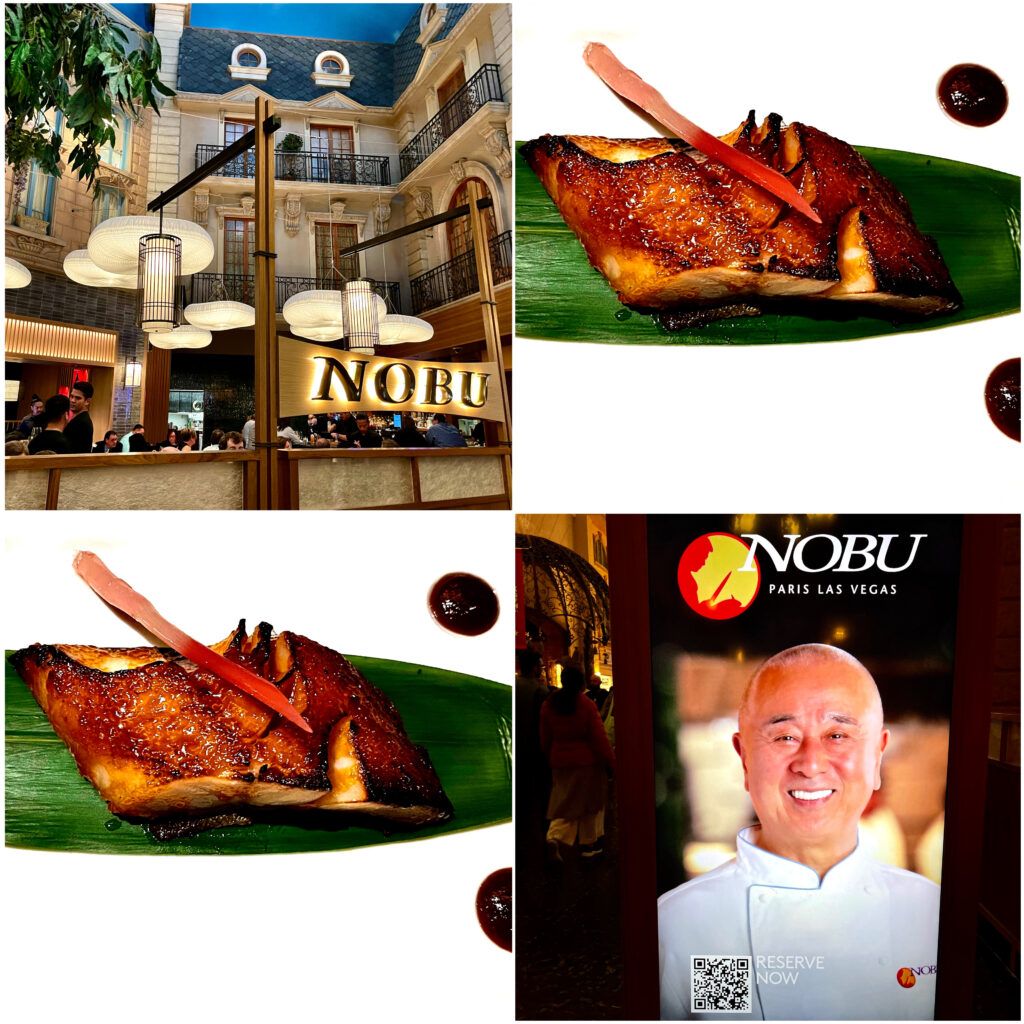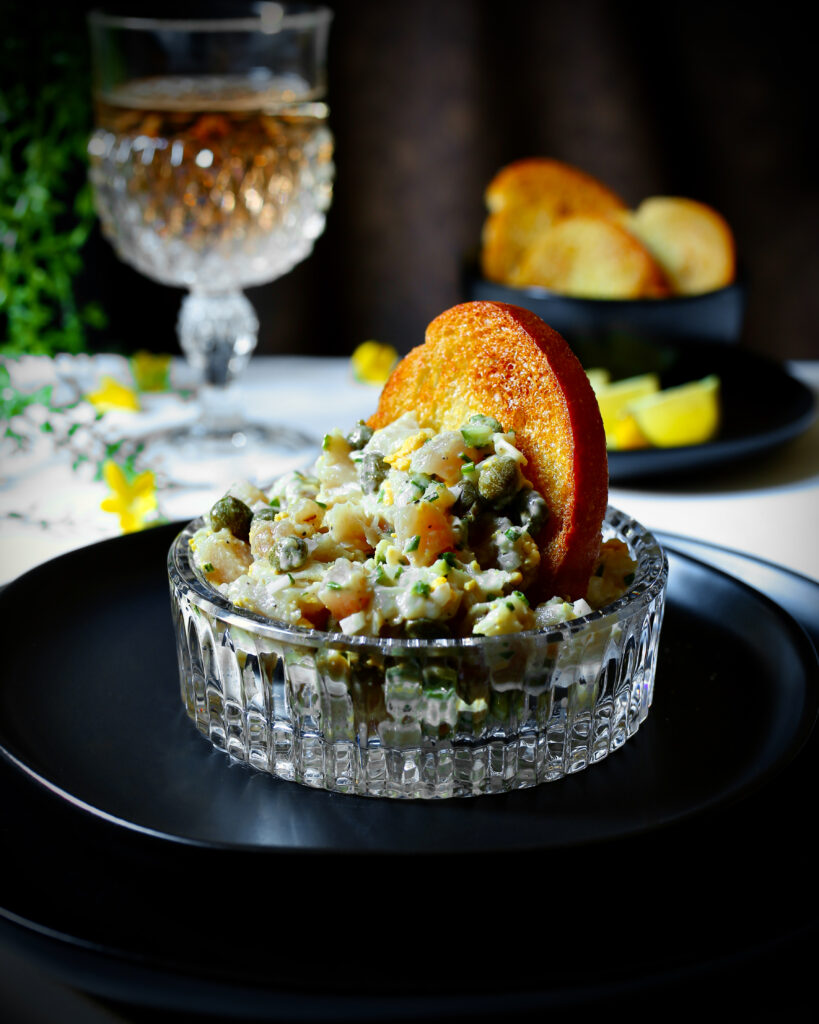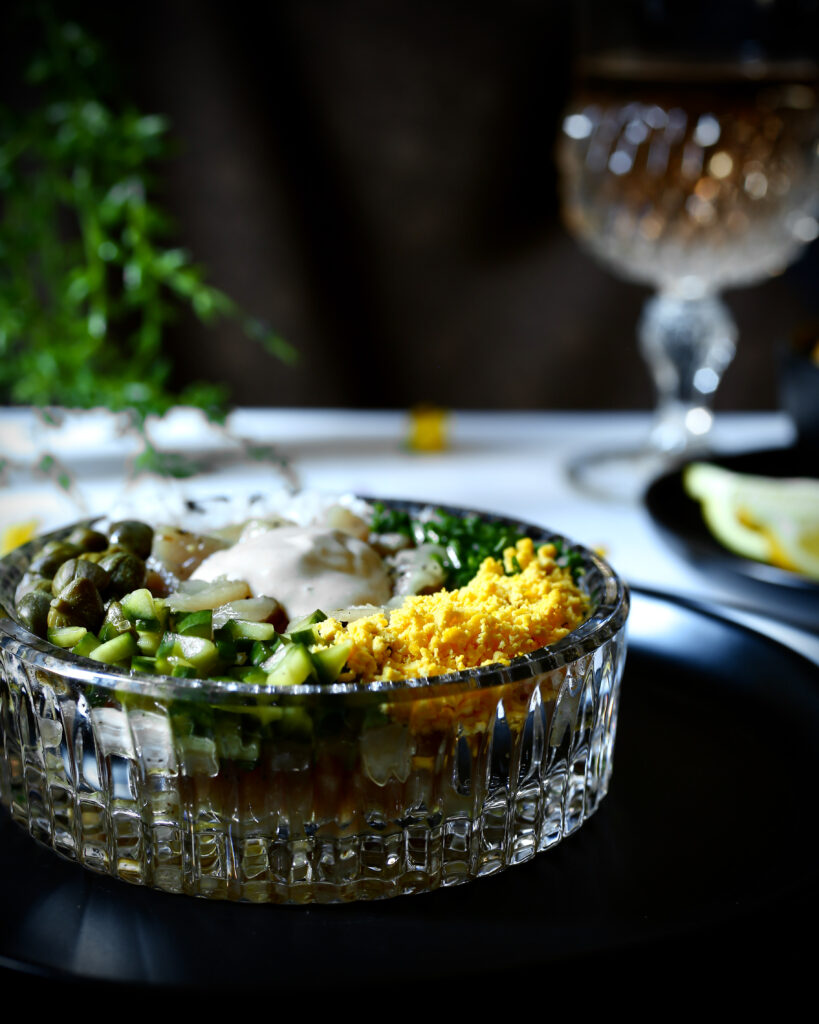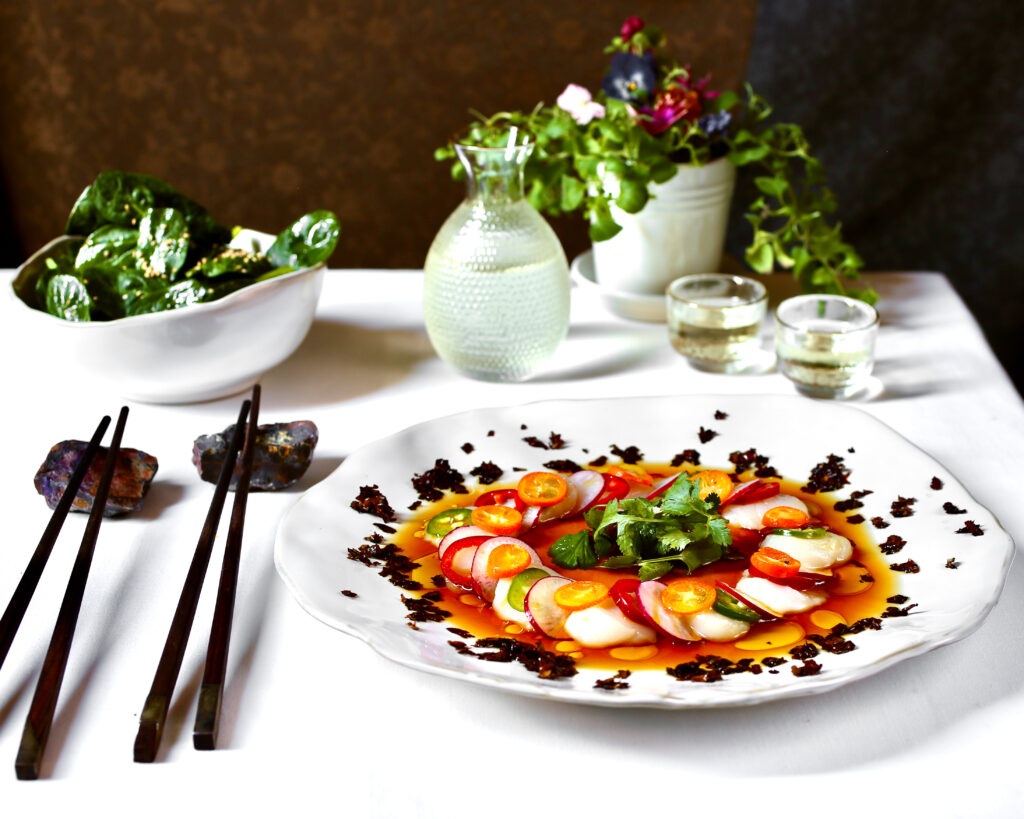
🌊 Maine Scallop Crudo 🌊
Maine Dulse Seaweed, Kumquat, Radish, Jalapeño, Lemon Ponzu, Cilantro
Maine’s long coastline and clean, cold waters inspired this dish featuring raw, buttery, day-boat Sea Scallops with their slightly sweet flavors; and Dulse (Palmaria palmata) a beautiful red seaweed that has a rich, meaty, umami flavor.
Crunchy peppery radish balance the tender scallop slices, jalapeños add vegetal spiciness, and seasonal kumquats add sweet tart notes. Lemon ponzu provides a base of sweet, sour, and salty flavors, where the olive oil adds a subtle richness.
When they’re raw, dulse flakes taste like briny ocean waters, but when sautéed, the smoky and savory characteristics emerge, giving dulse the nickname “bacon of the sea,” which pairs perfectly with this coastal crudo.
Lastly, a little mound of cilantro leaves brings the bright herbal notes, a sashimi style learned from Chef Nobu.
